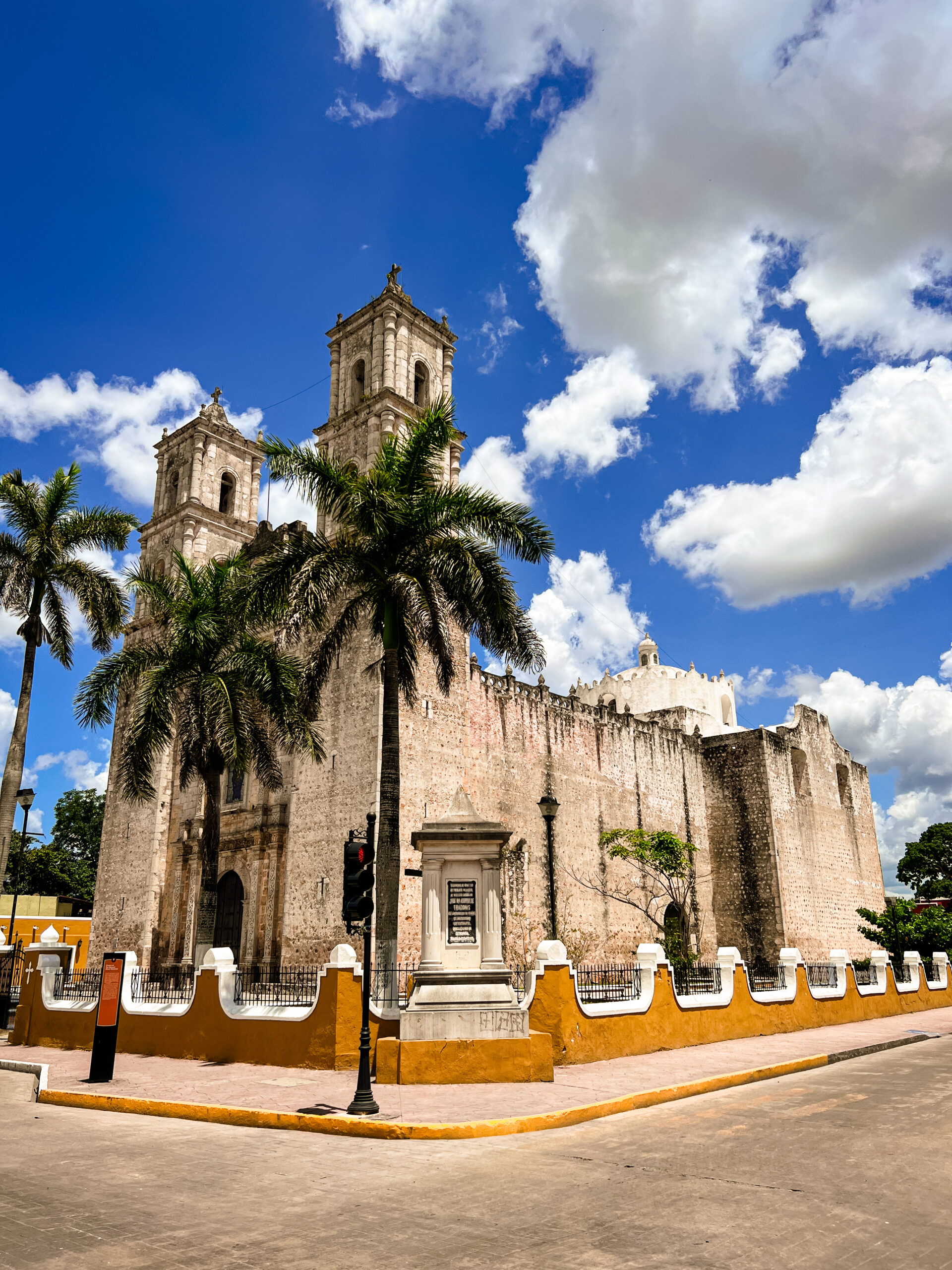When I think of Valladolid, a delightful city on Mexico’s Yucatan Peninsula, three things spring to mind: its vibrant, colourful, charming streets filled with beautiful colonial houses, the myriad of incredible cenotes in and around the city…and of course, Chichén Itzá.
Like Bacalar, Valladolid is still ‘off-the-beaten-path’ for travellers. Despite its proximity to Chichén Itzá, most tourists drive past it on huge coaches that typify organised day trips from Tulum/Cancun to Chichén Itzá. I think its worth stopping here for at least a couple of days.



I spent three days in Valladolid. Its streets are set in a grid-like pattern which makes wandering around them pretty easy. Parque Francisco Canton, its central park, is surrounded on all sides by busy roads and buildings that host bustling restaurants, government offices and souvenir shops. Despite this, it manages to remain a quiet oasis in the city. To its south, the imposing Iglesia de San Servacio, a 16th century catholic church gleams in the sunshine. It is said to have been rebuilt (in 1706) with the stones from a demolished Mayan pyramid. Be sure to try a marquesita (a delicious crêpe dessert filled with nutella and cheese and rolled up like a taco) from one of the street vendors in the park. If you hang around the park in the evenings (around 5.30pm), you’ll be treated to a traditional Mayan dance.



The most picturesque street in Valladolid is Calzada de los Frailes (’Road of the Friars’). Built in the 16th century to connect Valladolid with Sisal, an Indian town, the street is filled with colonial houses with beautiful facades, cafes and boutique hotels. It leads to a small park where Covento de San Bernadino de Siena is located (notable for being the site where indigenous Mayans were converted to Christianity). There is a light show depicting the history of Valladolid beamed onto the covent walls most nights, around 9/9.20pm.




My last day was reserved for exploring cenotes. Cenotes are natural sinkholes formed centuries ago by the collapse of limestone bedrock due to erosion by subterranean water. These holes were subsequently filled with water from underground rivers and formed natural, fresh-water pools. There are over 6000 cenotes in the Yucatan Peninsula. Cenotes were sacred to Mayans. They believed these openings were passages to the underworld. Archaeologists now hypothesize that Mayans left valuables and humans at these sites when they experienced droughts, as a form of sacrifice to the rain god Chaac.
I have to confess it was very difficult to decide which cenote to visit. There are at least thirteen cenotes (according to most blogs) in and around Valladolid that are worth visiting. However without a bike or car, it is more challenging to get to them; there are few organised tours.

Cenote Zaci is right in the heart of Valladolid. A semi-open cenote, it is surrounded by lush greenery which make its turquoise blue waters even more striking. Unfortunately the cenote was closed for renovation during my visit so I couldn’t walk down to the cave. However I could see the cenote from a viewing platform, and enjoyed wandering the grounds.
I opted to go to Cenote Ik Kil for my next excursion, purely for practical reasons. It is on the same route as Chichén Itzá so I was reassured there would be many buses to and from it. The downside is that all the coaches with day-trippers to Chichén Itzá stop here. The recommendation is to arrive before midday, to avoid the crowds. I arrived just after nine a.m., and there was only a single car in the car park.
The facilities at Ik Kil are similar to those at a public pool. There are lockers and an outdoor shower which you are required to use before you go into the cenote. You are also expected to wear a lifejacket at the cenote. The grounds hold a hotel, two restaurants and a small shop that sells drinks.

Ik Kil is an open-top cenote i.e there is an opening in the ceiling which allows sunlight to flood the cenote. The cenote is approximately 150 feet underground so there are (slippery) steps that lead you down. There is also a separate staircase underground that leads up to platforms for jumping/diving into the water.
A viewing platform at the bottom of the first flight of stairs allows you to appreciate the view of the cenote – the blue-green waters, trailing vines hanging down from its roof and the lush vegetation that adorn its walls.The pool itself is about 90 feet deep, filled with cold water and fish! This surprised me. And I have to confess, the presence of the many small black catfish made me less inclined to go in for a swim. Instead, I dipped my feet in the refreshing water and sat reading for a couple of hours, while enjoying the play of light across the waters and walls of the cenote. It was paradisiacal.



I loved my very limited time in Valladolid. There is a laid-back charm to this city, where life does not revolve around tourism. Its streets were ripe for exploration, its locals warm and welcoming and the variety of ruins and natural attractions in the city and surrounding areas make it a perfect stop on any trip to the Yucatan Peninsula.
Come back next week to read about my day at Chichén Itzá .
Visited July 2022.
Previous Post: Bacalar: The Most Epic Lake of Seven Colours
